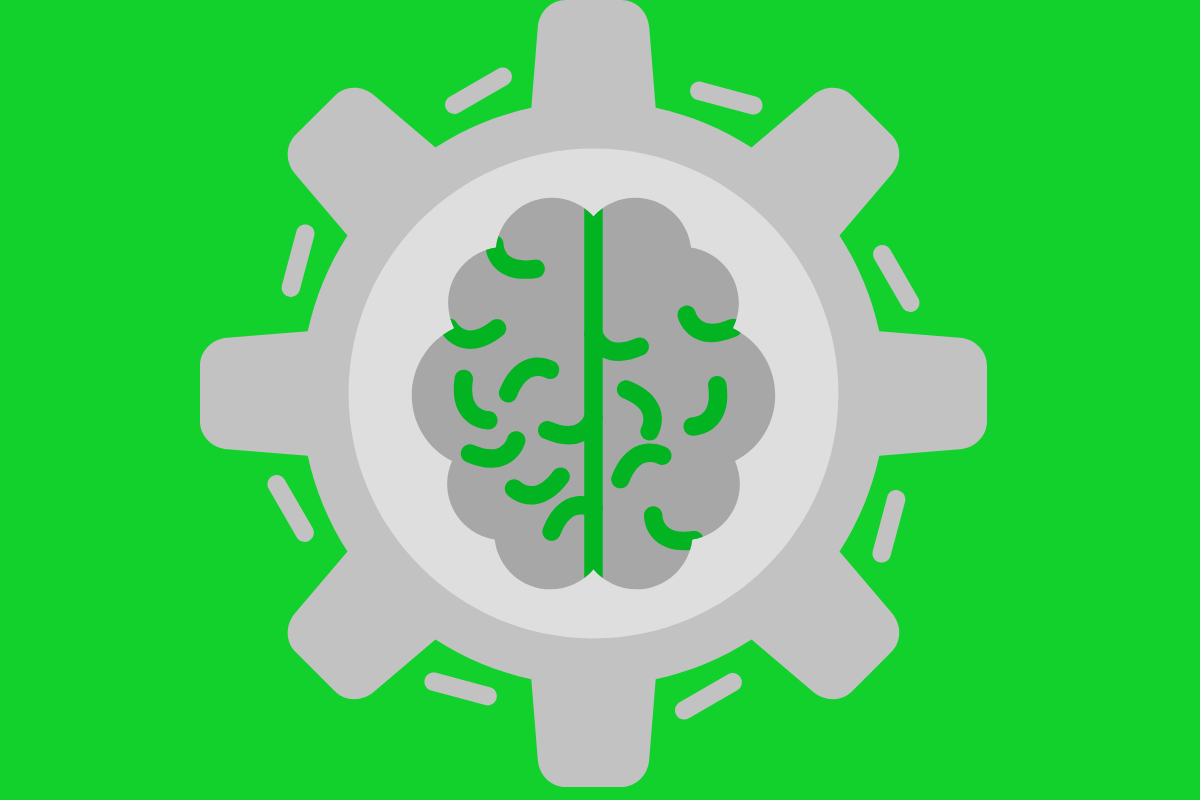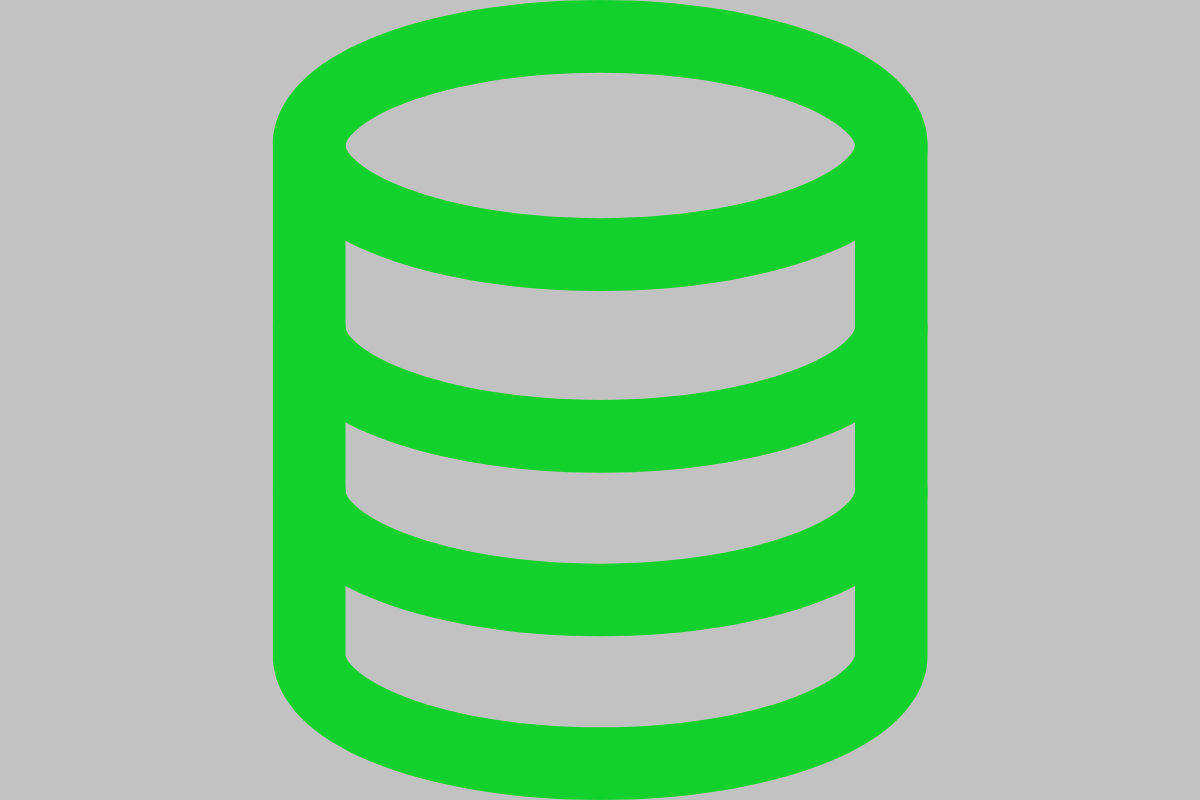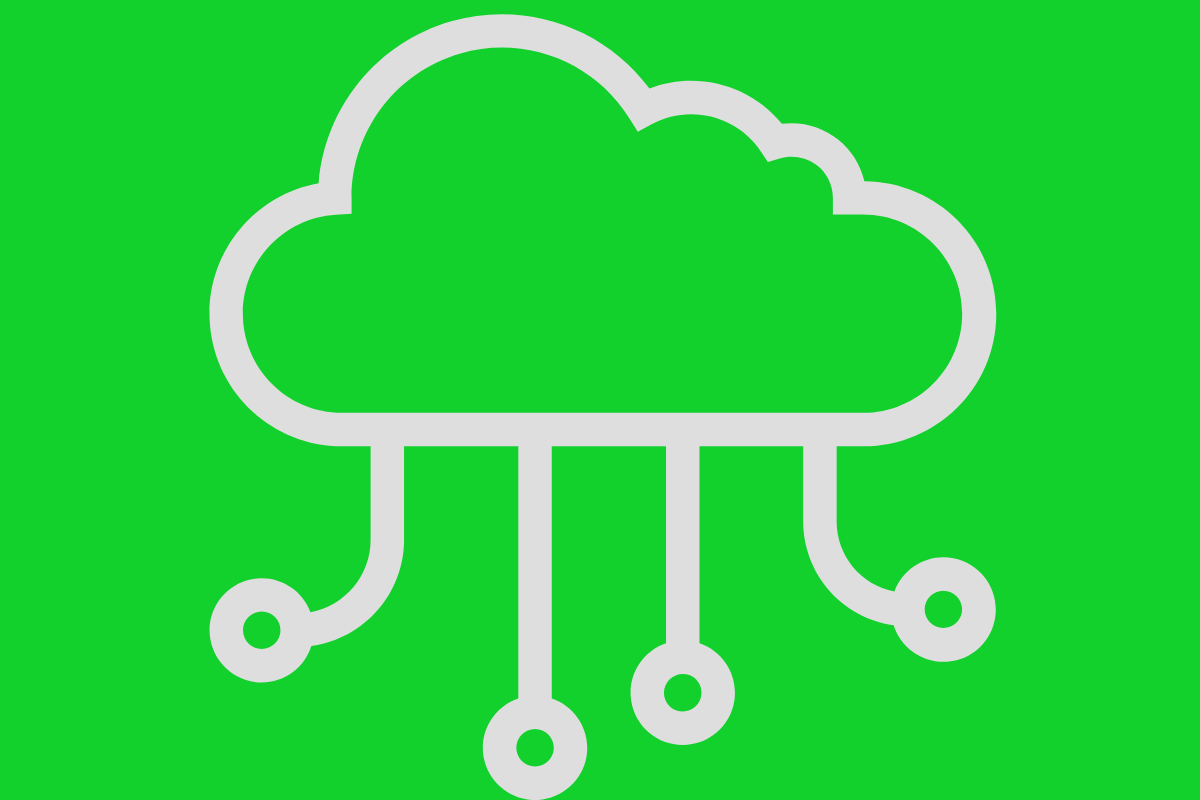Having specific cs portfolio projects specifically created and tailored to your programming job will not only get you more interviews but also more job offers as well.
In this article, there will be 3 personal projects for 13 different areas of computer science to gain relevant experience for the software engineering position you want.
Here we go!

Artificial Intelligence and Machine Learning
Artificial intelligence and Machine Learning are often the hardest areas of computer science to break into. A good AI/ML developer portfolio website is the best way to counter that.
Each of the projects I have listed below seems like they have a steep learning curve, but I will include example datasets for each project.
Chatbot with NLP for a specific topic
Collect a dataset relevant to the chosen topic, including text from books, articles, or websites. Clean and preprocess the data for improved NLP model performance.
Use Python and a deep learning library like TensorFlow or Keras to create a neural network model, such as sequence-to-sequence, transformers, or BERT-based models. Train the model, integrate it into a chatbot interface, and continuously test and refine the chatbot based on user feedback.
Image classification model using deep learning
Gather a dataset containing labeled images of the objects you want your model to recognize. Resize the images to a consistent size, normalize pixel values, and augment the dataset with transformations like rotation, scaling, and flipping.
Using Python and TensorFlow or Keras, create a neural network model for image classification, such as CNNs, ResNet, or Inception. Train the model, fine-tune it, and optimize its performance. Integrate the model into an application or service requiring object recognition capabilities.
Sentiment analysis with machine learning
Collect a dataset of text data, such as product reviews or social media comments, with associated sentiment labels (e.g., positive, negative, or neutral). Clean and preprocess the data by tokenizing, stemming or lemmatizing, and vectorizing the text.
Use Python and a machine learning library like Scikit-learn or TensorFlow to create a sentiment analysis model, such as logistic regression, support vector machines (SVM), or LSTM networks. Train and evaluate the model, then integrate it into an application or web service that can analyze the sentiment of the user-generated text.

Web Development
Web developer portfolio websites are almost essential to becoming a frontend, Backend, or Full stack software developer role. Web developer portfolios allow software developers to showcase technical skills to potential employers.
If you can recreate an initial design (from Figma or Adobe XD) into creating a fully functioning website will show that you can handle the entire software lifecycle.
A software company might want your developer portfolio’s design to be a web project.
E-commerce platform
Design a full front end, using HTML, CSS, and JavaScript. Choose a server-side framework (Node.js, Django, or Ruby on Rails) for the backend, and plan the database schema for storing product and user information.
Create a frontend-backend communication using RESTful APIs. Implement user authentication, product browsing, shopping cart management, and integrate a payment gateway for secure transactions.
Social media platforms
Design a responsive user interface with HTML, CSS, and JavaScript. Select a backend framework and a database system for storing user data and content.
Create a RESTful API for the backend server. Implement features like user authentication, content posting, commenting, liking, and following other users. Use the database to store user profiles, posts, and interactions.
Blogging platform
Design the frontend user interface with HTML, CSS, and JavaScript. Choose a server-side framework and a database system for storing blog posts and user information.
Create a backend server to handle user authentication, content creation, and editing. Implement RESTful APIs for communication between the frontend and backend. Use the database to store blog posts, user profiles, and other related data.

Human-Computer Interaction
Human-Computer Interaction is a growing field where websites and applications provide accessible features.
While these ideas are usually meant for web designers, software engineers implement these features on the job.
This could be very valuable job experience.
Voice-controlled assistant
Get started: Research available speech-to-text APIs for converting user speech into text, and familiarize yourself with NLP techniques for processing and interpreting commands.
Design a system that captures user voice input, converts it to text using a speech-to-text API, and processes command using NLP.
Implement features like setting reminders, answering questions, controlling smart home devices, and designing a user interface that provides appropriate feedback.
Gesture-based input system
Investigate computer vision techniques and libraries (such as OpenCV) for recognizing hand gestures captured by a webcam or other sensors. Identify a set of gestures to recognize and the actions they should trigger.
Develop a computer vision system that captures and processes real-time video input, recognizes predefined hand gestures, and triggers corresponding actions within an application or game.
Design a user interface that provides visual feedback on recognized gestures and resulting actions.
Accessible web applications
Research web accessibility guidelines (such as WCAG) and best practices for designing inclusive user interfaces. Identify a web application concept that would benefit from improved accessibility.
Design and develop a web application that adheres to accessibility guidelines and supports diverse users, including those with visual, auditory, or motor impairments.
Implement features like keyboard navigation, screen reader compatibility, and adjustable font sizes, and test the application’s usability with various assistive technologies.

Cybersecurity and Cryptography
Cybersecurity engineers can help boost response rates from potential employers by providing a programming portfolio and resume. Showing computer science skills integrated with cyber security themes will help you get your dream job.
Secure Messaging Application
Learn about secure communication protocols (e.g., SSL/TLS, Signal Protocol) and cryptographic algorithms (e.g., AES, RSA, Diffie-Hellman).
Design and implement a secure messaging application with end-to-end encryption to protect messages. Implement user authentication, secure key exchange, and encrypted message storage. Develop a user interface for sending and receiving messages securely.
Password Manager
Study existing password managers (e.g., LastPass, 1Password) and learn about encryption algorithms, secure storage, and password generation techniques.
Design and implement a password manager that securely stores user credentials using encryption and other security techniques. Include features like password generation, secure storage, and autofill integration with browsers or applications. Develop a user interface for managing and accessing stored credentials.
Cryptography Algorithm Visualization
Research various cryptographic algorithms (e.g., symmetric encryption, public-key encryption, hashing) and choose a set of algorithms to visualize.
Design and implement a web application that visually demonstrates the workings of selected cryptographic algorithms. Users should be able to interact with the visualizations by providing input data, adjusting algorithm parameters, or controlling the execution speed.

Algorithms and Data Structures
Algorithms and Data Structures form the foundation of computer science, providing efficient solutions to complex problems and enabling optimal resource management.
Regardless of the specific area of computer science, having at least one project focused on algorithms and data structures in your portfolio showcases a deep understanding of core concepts and demonstrates your ability to tackle challenging tasks.
Visual Algorithm Explorer
Study popular algorithms (sorting, searching, graph algorithms) and data structures (arrays, linked lists, trees, graphs) to include in the final project.
Design and implement a web-based application that visually demonstrates the workings of various algorithms and data structures.
Users should be able to interact with the visualizations by providing input data, adjusting algorithm parameters, or controlling the execution speed.
Pathfinding Algorithm Comparison
Research pathfinding algorithms, such as Dijkstra’s, A*, and BFS, and choose a suitable representation for graphs or grids.
Implement multiple pathfinding algorithms and create a user interface that allows users to compare their performance on different graphs or grid maps.
Users should be able to adjust parameters, such as graph size and obstacle density, to observe the impact on algorithm efficiency.
Custom Data Structure Library
Study various data structures and their implementations, such as heaps, tries, and bloom filters.
Design and implement a library containing custom implementations of selected data structures in a programming language of your choice.
Include thorough documentation, unit tests, and performance benchmarks to demonstrate the correctness and efficiency of your implementations.

Software Engineering
Software Engineering is a crucial discipline in computer science, encompassing the design, development, and maintenance of high-quality software systems.
Incorporating at least one Software Engineering project in your computer science portfolio is essential, regardless of your specialization, as it demonstrates your ability to apply best practices, methodologies, and tools to create robust, efficient, and maintainable software.
Project Management Tool
Research existing project management tools like Trello or Asana and decide on your application’s desired features and functionalities.
Design and implement a web application with a frontend (HTML, CSS, JavaScript) and backend (Node.js, Django, Ruby on Rails) that allows users to create and manage tasks, organize them into projects, and track their progress over time.
Bug Tracking System
Study existing bug-tracking systems, such as Bugzilla or Jira, and define your application’s desired features and functionalities.
Design and implement a web application that allows users to report, track, and manage software bugs.
Implement user authentication, bug submission, assignment, commenting, and status-tracking features. Use a database to store bug reports and user information.
Continuous Integration and Deployment (CI/CD) Pipeline
Learn about CI/CD concepts, tools, and best practices. Select a sample software project to demonstrate the CI/CD pipeline functionality.
Design and implement a CI/CD pipeline using tools like Jenkins, GitLab CI, or GitHub Actions. Integrate various stages, such as building, testing, and deploying the sample project.
Configure the pipeline to automatically trigger code changes and provide status reports and notifications to project stakeholders.

Operating Systems
Operating Systems are the backbone of modern computing, managing hardware resources and providing a stable environment for software applications.
Studying Operating Systems offers invaluable insights into the inner workings of computers, exposing students to concepts such as process management, memory management, file systems, and concurrency.
Developing projects in the Operating Systems domain allows aspiring computer scientists to showcase their understanding of low-level system interactions and ability to design and implement efficient solutions for complex computing challenges.
Simple Operating System
Learn about operating system concepts such as process management, memory management, and file systems. Choose a target platform (e.g., x86, ARM) and research relevant documentation and tools.
Design and implement a simple operating system that includes a basic kernel, process scheduler, memory manager, and file system.
Test your operating system using an emulator, virtual machine, or physical hardware.
Shell Implementation
Get started: Study existing shells like Bash, and learn about shell concepts such as command interpretation, process management, and input/output redirection.
Design and implement a custom shell in a programming language of your choice.
Include features like command parsing, process management, and support for input/output redirection and pipes.
Custom Linux Kernel Module
Learn about Linux kernel module development, including kernel programming concepts, APIs, and tools.
Design and implement a custom Linux kernel module that provides new functionality, such as a device driver, a system call, or a custom file system.
Test and debug the module using a Linux development environment.

Database Systems
Databases play a central role in the world of computer science, enabling the efficient storage, retrieval, and management of vast amounts of data.
Incorporating at least one Database project in your computer science portfolio is essential, as it demonstrates your ability to design, implement, and optimize database systems that cater to the data-driven demands of various applications.
By featuring your proficiency in database systems, you can stand out to potential employers and collaborators, proving your capacity to develop and maintain reliable and scalable data solutions across multiple domains.
SQL Query Analyzer
Learn about SQL syntax and query optimization techniques, and choose a database system (e.g., MySQL, PostgreSQL) for your project.
Design and implement a web application or desktop tool that allows users to input SQL queries, analyze their performance, and suggest optimizations.
Interface with the chosen database system to execute queries and collect performance metrics.
Custom Database Engineering
Study database concepts such as storage engines, indexing, query processing, and transactions.
Design and implement a custom database engine that supports a subset of SQL or a custom query language. Implement features like data storage, indexing, query processing, and transaction management.
Develop an API for clients to interact with the database engine.
Database Migration Tool
Research database migration techniques and tools, and choose two or more database systems (e.g., MySQL, PostgreSQL, SQLite) for your project.
Design and implement a database migration tool to convert data and schema between the chosen database systems. Include features like data transformation, schema conversion, and error handling.
Provide a user interface or command-line interface for users to perform migrations.

Video Game Development and Computer Graphics
Video Game Development and Computer Graphics are dynamic and engaging fields within computer science, combining creativity and technical expertise to create immersive and visually stunning experiences.
As a computer science developer, exploring these domains allows you to push the boundaries of what’s possible, harnessing cutting-edge technologies and innovative techniques to captivate users with interactive worlds and compelling narratives.
Diving into Video Game Development and Computer Graphics can sharpen your problem-solving abilities, expand your skill set, and showcase your aptitude for crafting engaging and visually appealing solutions.
2D Game Engine
Study existing 2D game engines (e.g., Unity, Godot) and game development concepts, such as game loops, physics, and rendering.
Design and implement a 2D game engine in a programming language of your choice (e.g., C++, Python). Implement features like a game loop, physics, rendering, and user input handling. Develop a simple game or demo using your engine to showcase its capabilities.
3D Renderer
Learn about 3D computer graphics concepts, such as 3D transformations, projection, shading, and texturing. Familiarize yourself with graphics libraries like OpenGL or Vulkan.
Design and implement a 3D renderer using a graphics library like OpenGL or Vulkan. Implement features like 3D model loading, transformations, shading, and texturing. Develop a demo application to showcase the renderer’s capabilities with various 3D models and scenes.
Procedural Content Generation
Get started: Research procedural content generation techniques, such as Perlin noise, fractals, or L-systems, and choose a type of content to generate (e.g., terrain, textures, levels).
Design and implement a procedural content generation system that uses one or more algorithms to create the chosen content. Integrate the generated content into a game or visualization application.
Provide a user interface for adjusting generation parameters and previewing the results in real time.

Computer Networking and Distributive Systems
Computer Networking and Distributive Systems are integral components of modern computer science, focusing on the design, implementation, and management of interconnected systems that enable seamless communication and collaboration.
As a computer science developer, delving into these domains equips you with the skills and knowledge to build reliable and efficient networked systems, ranging from local area networks to large-scale distributed applications.
Distributed File Storage System:
Learn about distributed file systems, such as Hadoop Distributed File System (HDFS) or Google File System (GFS). Understand concepts like data replication, partitioning, and fault tolerance.
Design and implement a distributed file storage system that can store large files across multiple nodes in a cluster. Ensure that the system is fault-tolerant and scalable by implementing replication and partitioning strategies. You can use programming languages like Java, Python, or Go, and consider using communication protocols such as gRPC or REST for communication between nodes.
Distributed Task Scheduler and Executor
Study the principles of distributed task scheduling, load balancing, and task execution. Familiarize yourself with existing solutions like Apache Mesos, Kubernetes, or Celery.
Design and implement a distributed task scheduler and executor that can efficiently distribute tasks across multiple worker nodes in a cluster. The system should be able to dynamically allocate resources, manage task dependencies, and ensure fault tolerance. Use a programming language like Java, Python, or Go, and consider using message brokers like RabbitMQ or Apache Kafka for communication between scheduler and worker nodes.
Distributed Key-Value Store
Learn about distributed key-value stores, such as Amazon DynamoDB, Apache Cassandra, or Redis. Understand concepts like data partitioning, replication, and consistency models.
Design and implement a distributed key-value store that can store and retrieve data across multiple nodes in a cluster. Ensure that the system is fault-tolerant and scalable by implementing data partitioning and replication strategies. Choose a programming language like Java, Python, or Go, and consider using communication protocols such as gRPC or REST for communication between nodes.

Data Science
Data Science is a multidisciplinary field that has rapidly emerged as a cornerstone of modern computer science, leveraging the power of data to derive actionable insights and drive decision-making.
As a computer science developer, immersing yourself in Data Science equips you with the skills to collect, analyze, and interpret complex datasets, transforming raw data into valuable information.
Venturing into Data Science not only expands your skill set but also showcases your ability to develop innovative and data-driven solutions that have a significant impact on businesses, organizations, and society as a whole.
Secure Messaging Application
Learn about secure communication protocols (e.g., SSL/TLS, Signal Protocol) and cryptographic algorithms (e.g., AES, RSA, Diffie-Hellman).
Design and implement a secure messaging application with end-to-end encryption to protect messages. Implement user authentication, secure key exchange, and encrypted message storage.
Develop a user interface for sending and receiving messages securely.
Password Manager
Study existing password managers (e.g., LastPass, 1Password) and learn about encryption algorithms, secure storage, and password generation techniques.
Design and implement a password manager that securely stores user credentials using encryption and other security techniques. Include features like password generation, secure storage, and autofill integration with browsers or applications.
Develop a user interface for managing and accessing stored credentials.
Cryptography Algorithm Visualization
Research various cryptographic algorithms (e.g., symmetric encryption, public-key encryption, hashing) and choose a set of algorithms to visualize.
Design and implement a web application that visually demonstrates the workings of selected cryptographic algorithms.
Users should be able to interact with the visualizations by providing input data, adjusting algorithm parameters, or controlling the execution speed.

Internet of Things (IoT) and Embedded Systems
Internet of Things (IoT) and Embedded Systems are transformative fields within computer science, bridging the gap between the physical and digital worlds by connecting everyday objects and devices with powerful computing capabilities.
As a software engineer, venturing into IoT and Embedded Systems enables you to develop innovative solutions that have a profound impact on various industries, from healthcare and transportation to smart homes and agriculture.
Smart Home Automation System
Research IoT protocols, sensors, and actuators commonly used in smart home automation systems, such as Zigbee, Z-Wave, or MQTT.
Design and implement a smart home automation system using microcontrollers (e.g., Arduino, Raspberry Pi) and various sensors/actuators.
Develop a web or mobile application to monitor and control the devices remotely.
Wearable Fitness Tracker
Study existing fitness trackers and learn about relevant sensors (e.g., accelerometer, heart rate sensor) and communication protocols (e.g., Bluetooth Low Energy).
Design and implement a wearable fitness tracker using a microcontroller and relevant sensors.
Develop a mobile application that communicates with the tracker to collect and display fitness data, such as steps, heart rate, and distance traveled.
IoT-enabled Weather Station
Research weather sensors (e.g., temperature, humidity, barometric pressure) and IoT communication protocols (e.g., Wi-Fi, LoRaWAN).
Design and implement an IoT-enabled weather station using a microcontroller and various weather sensors. Transmit the collected data to a remote server or cloud service for storage and analysis.
Develop a web or mobile application to display the weather data in real time and provide historical analysis.

Cloud Computing
Cloud Computing is a staple to computer science professionals. Knowing how to interact with a cloud provider can make you irresistible to future employers hiring a software engineer.
Serverless Application
Get started: Learn about serverless computing concepts and platforms, such as AWS Lambda, Google Cloud Functions, or Microsoft Azure Functions.
Design and implement a serverless application that uses cloud functions to provide a scalable web or mobile application backend.
Implement features like user authentication, data storage, and API integration.
Develop a web or mobile application to interact with the serverless backend.
Dockerized Web Application
Study containerization concepts and tools like Docker and learn about container orchestration platforms like Kubernetes or Docker Swarm.
Design and implement a web application that can be deployed using Docker containers.
Create a Dockerfile to package the application and its dependencies.
Deploy the containerized application on a container orchestration platform or a cloud provider that supports Docker.
Scalable Microservices Architecture
Research microservices architecture concepts and patterns, such as API gateways, service discovery, and load balancing.
Design and implement a scalable microservices-based system, splitting the application’s functionality into multiple independent services.
Implement an API gateway to route requests to the appropriate services and use load balancing to distribute the load across multiple service instances. Deploy the microservices on a cloud provider or container orchestration platform.
What should be included in a CS portfolio?
Coding portfolios contain relevant employer information. You may even include a screenshot and link to previous code work.
Do computer science majors need a portfolio?
I think you have the computer engineering skills. As noted above, computer science portfolios may even be useful to build your resume. That’s as critical a resume. Although a resume fills your job interviewer with information about your past work experience and skills it doesn’t prove your knowledge.
How many CS portfolio projects do I need?
I believe that 4-5 big CS portfolio projects on your website shows proper profiency over the computer science area you focused on.
